Auguste Préault in 10 Romantic Sculptures
People once thought Romanticism belonged only to painting, not sculpture. Auguste Préault challenged that belief with bold creativity. The...
Errika Gerakiti 26 September 2025
Kintsugi (金継ぎ translates as “gold joinery”) is a Japanese art form and philosophy of repairing broken or cracked pottery with gold or silver-colored lacquer. Unlike normal methods of repair, the “damage” is not camouflaged or hidden but is highlighted, revealed, and emphasized. Much like the Japanese philosophy of wabi-sabi, this art form sees potency in embracing flaws and imperfections. These broken pieces become part of the history of the object and are honored and recognized. Billie Bond integrates kintsugi into sculpture.
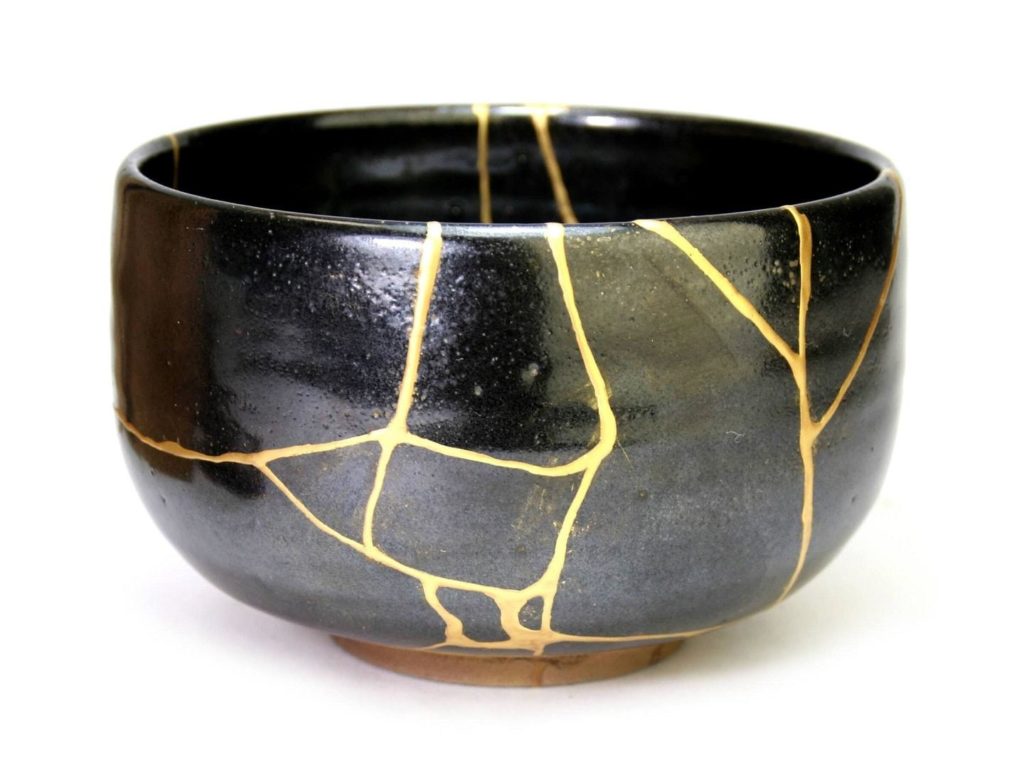
British artist, Billie Bond, integrates this centuries-old technique in her portrait sculptures. Since 2014, her exhibits and works have explored the kintsugi themes of the broken, redemption, human fragility, and strength. Using a variety of sculptural materials, the results are poignant, moving, and incorporate kintsugi in a unique and modern way.
Billie Bond was born in 1965 and grew up in Essex, England. Originally a nurse, she eventually went on to design and then studied art. In her words these kintsugi pieces explore the idea that the cracks “make the object better than it was before—it is enriched by its experience.”
Kintsugi Head I (2014) was the first piece of Bond’s I came across. The beautifully serene, yet scarred, almost mutilated appearance was so striking. It was part of her Perfect Imperfection—The Art of Healing exhibition, which was her first solo one in London. As with all of the works in this series, it explores trauma and pain, especially psychological, and seeks to uncover and understand it.
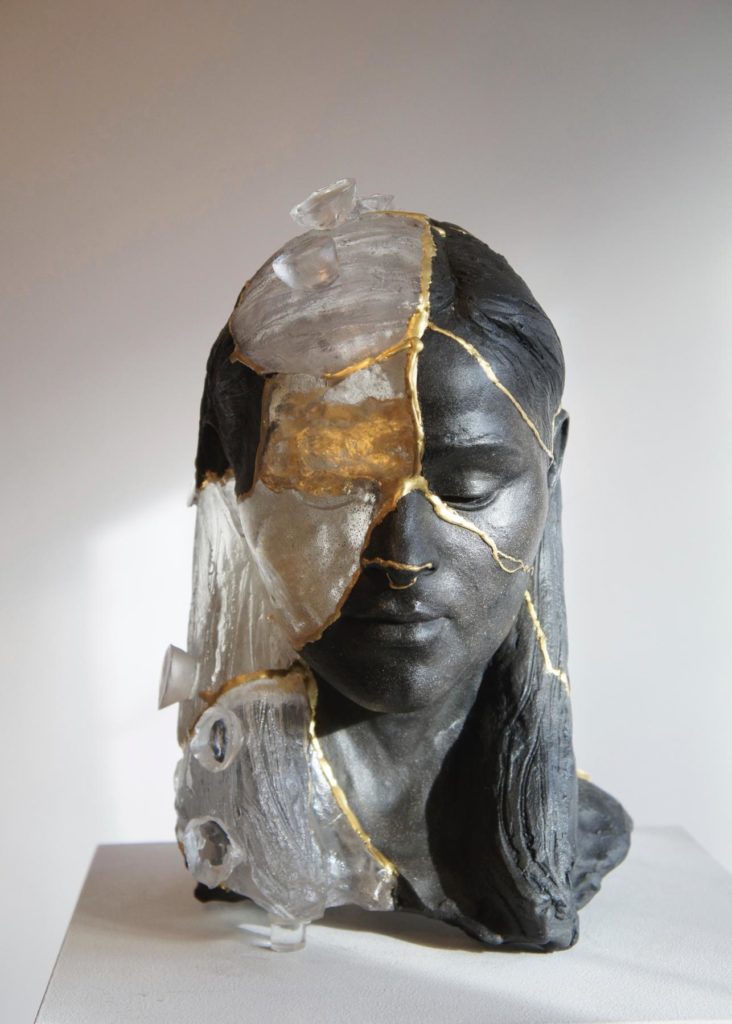
Stemming from her medical background, there is a great understanding of the human form and function. There is also the element of putting the pieces back together in a very metaphorical sense. Rebuilding, reestablishing with more depth and understanding than before the breakage. Bond says that to her the “creation of realism is the craft, the art begins when I destroy it”. Below the image shows the result of the breakage after she casts the sculpture.
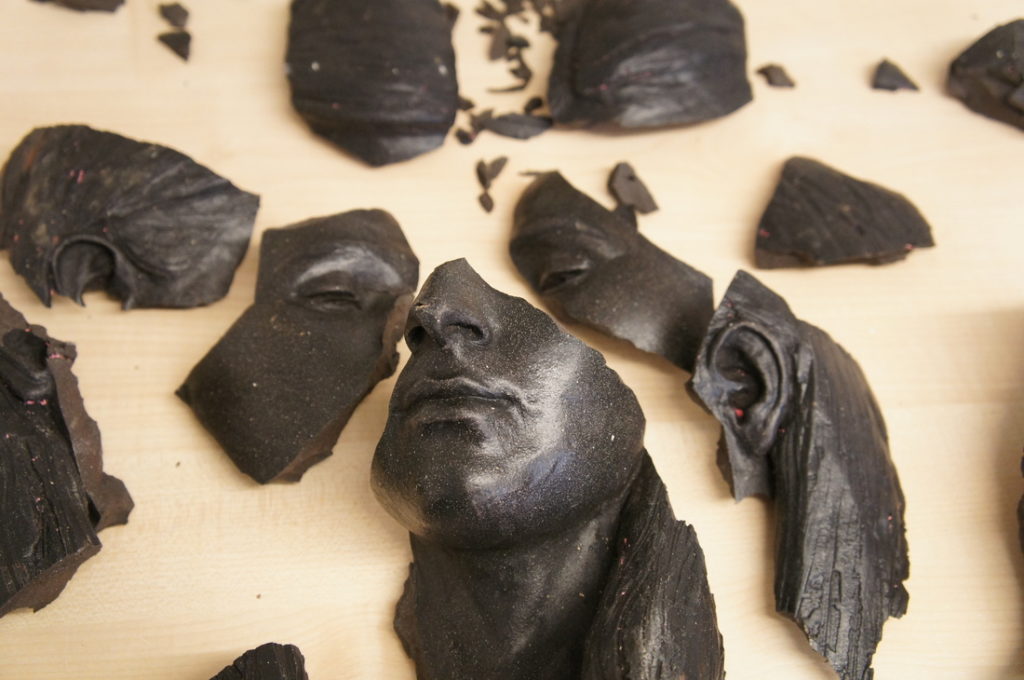
Principles of Fortitude I (2014) shows slightly different coloring and effects the materials have. There is a solemnity and sombreness that is pensive and almost meditative. The figures are self-contained, consumed by their pain and their healing. Here too we feel the fragility and are struck by the gleaming scars.
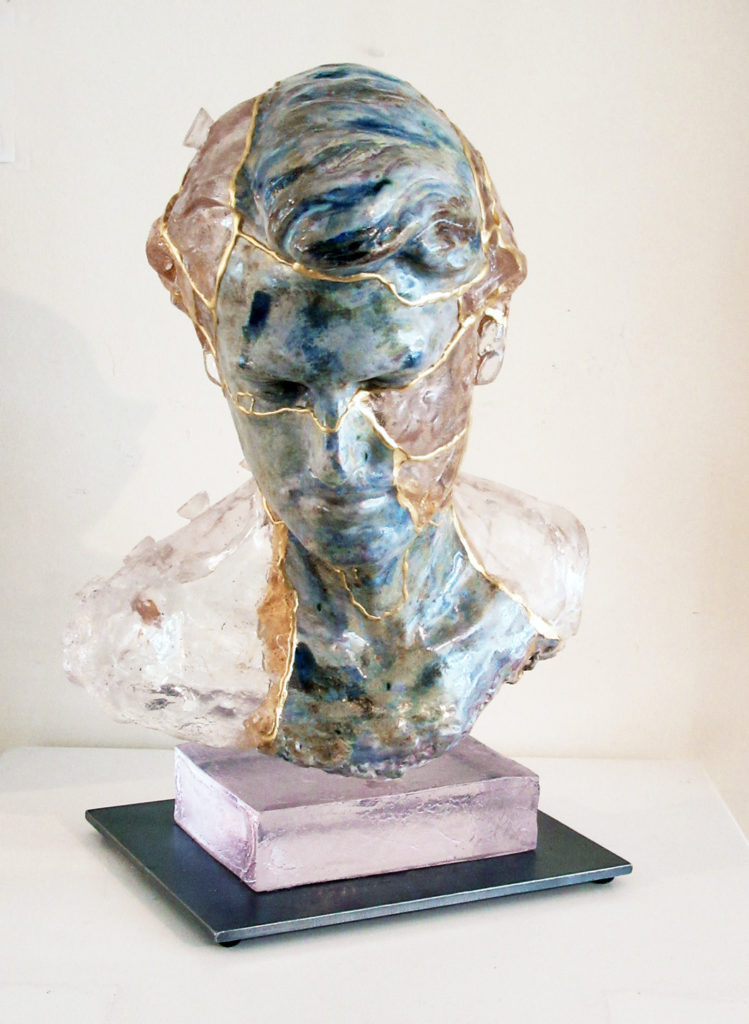
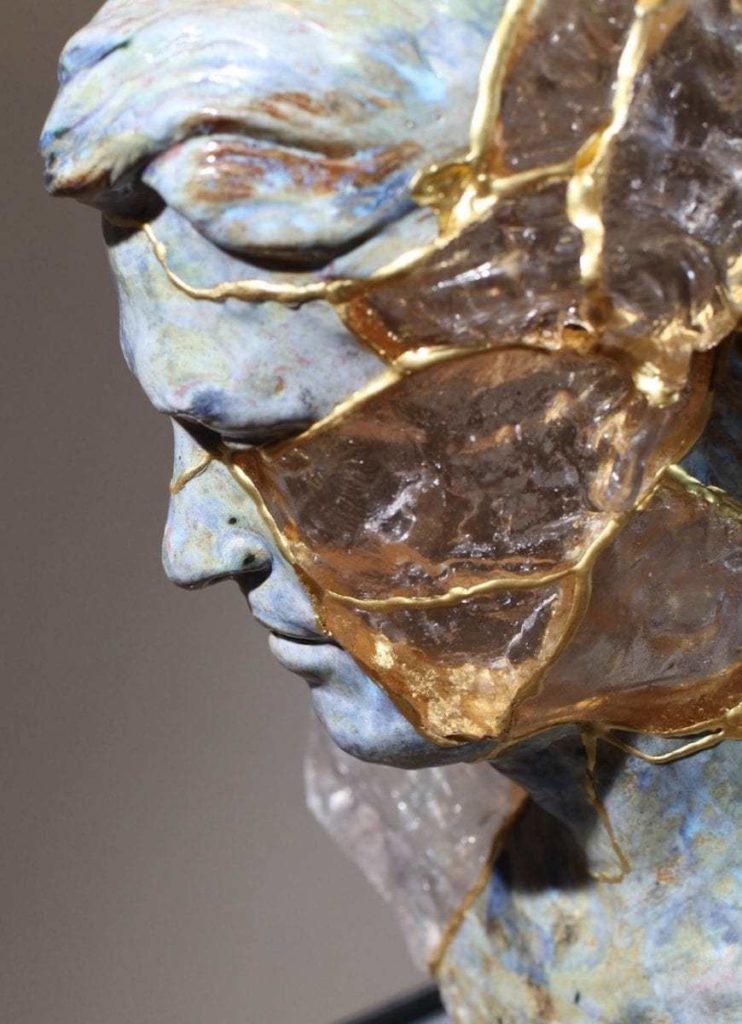
Breathe (2019) is a powerful and enlivening piece. It seems to invoke much more of the initial stages of healing as opposed to the other two. You can feel the figure taking a deep breath with a subtle smile. On her Instagram Bond states:
Breathe presents aspects of psychological trauma and healing as a physical narrative… The work begins its journey in the traditional sense of realistic representation, then seeks to expand the parameters of the genre beyond a lifelike representation through a process of destruction and repair to convey a journey of grief and trauma to healing and wellbeing. Emotional encounters are imbued into material form. The illuminated resin sections represent enlightenment through experience. The act of making, destroying, and repairing demonstrates a universal metaphorical journey. This work sits quietly and meditatively presenting imperfections, pain, and memories—the scars of life.
Billie Bond. Artist’s Instagram.
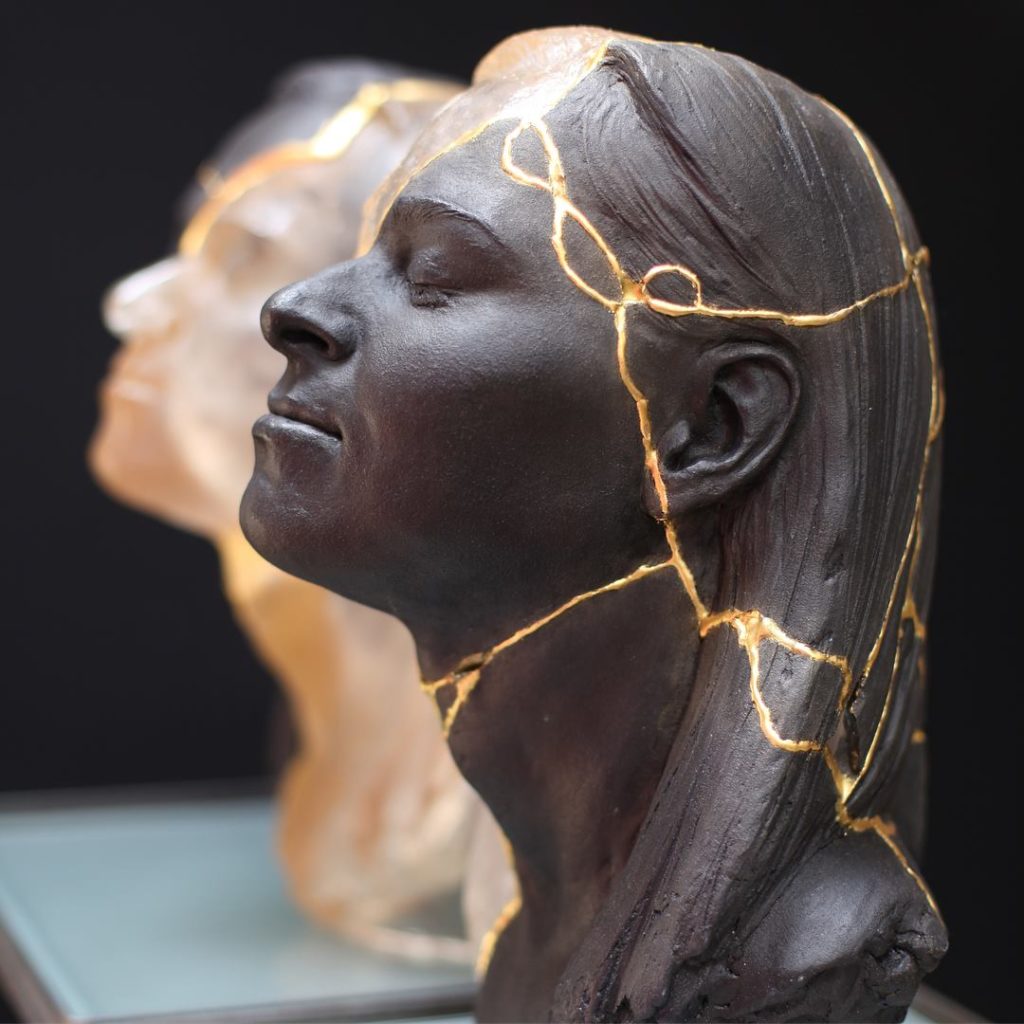
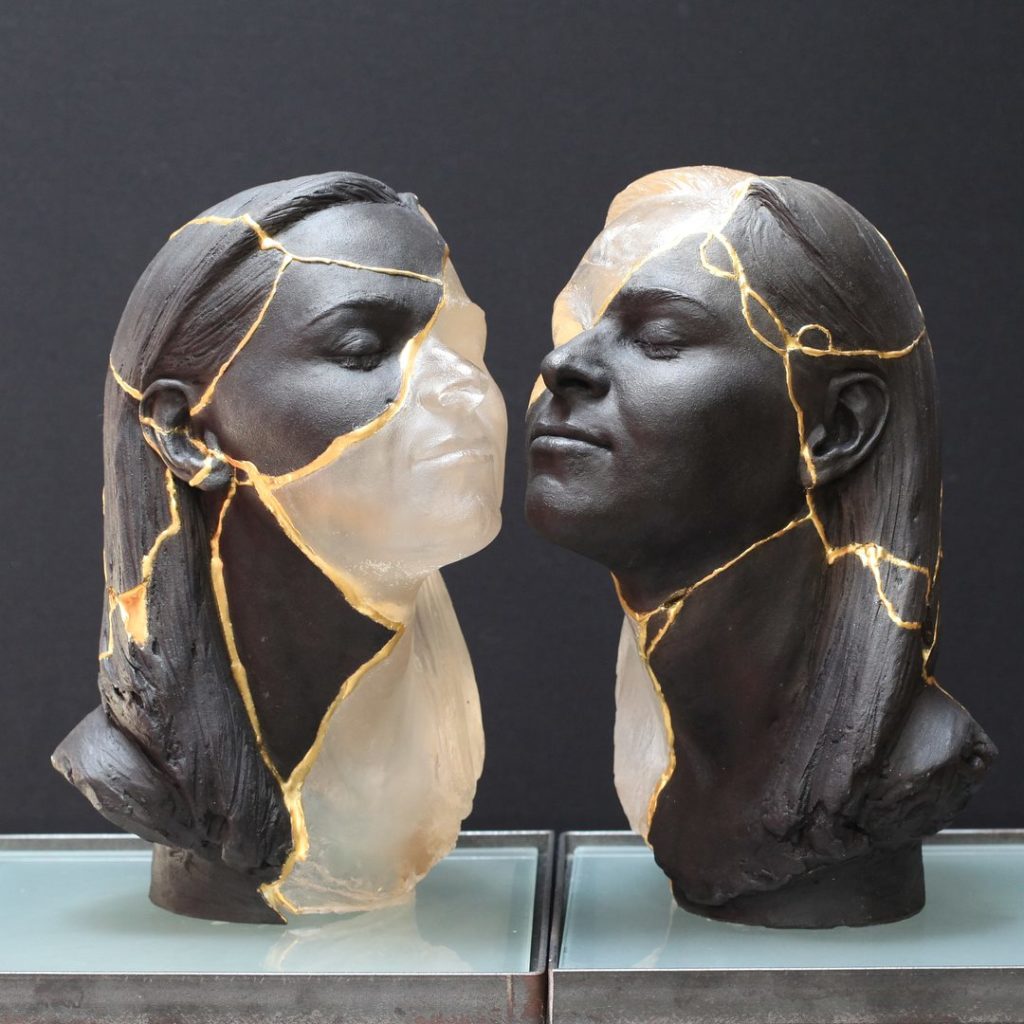
One of Billie Bond’s most recent projects is a commission by Janssen Pharmaceutical Company and Global Alliance of Mental Illness Advocacy Networks-Europe to “create 5 Kintsugi ceramic objects that visually described the journey of people living with Major Depressive Disorder.” Called “Breaking Depression” the project seeks to educate better and understand mental health.
The human condition of growth, redemption, and healing are timeless and so relatable. Bond’s touching and thoughtful approach to the subject is modern and respectful. In this time of more understanding and destigmatization of things such as mental health, it is wonderful to see how art like this is such a big part of unfolding our stories and empathy.
DailyArt Magazine needs your support. Every contribution, however big or small, is very valuable for our future. Thanks to it, we will be able to sustain and grow the Magazine. Thank you for your help!